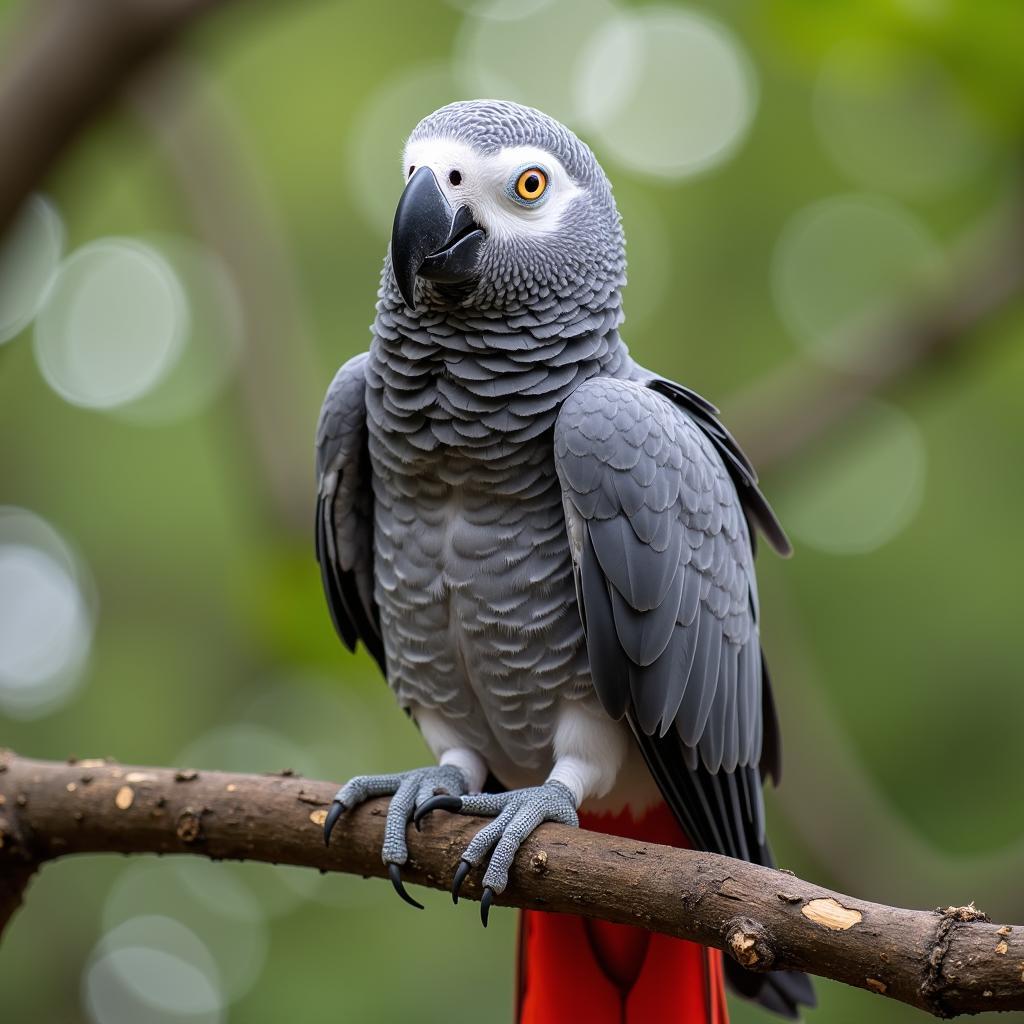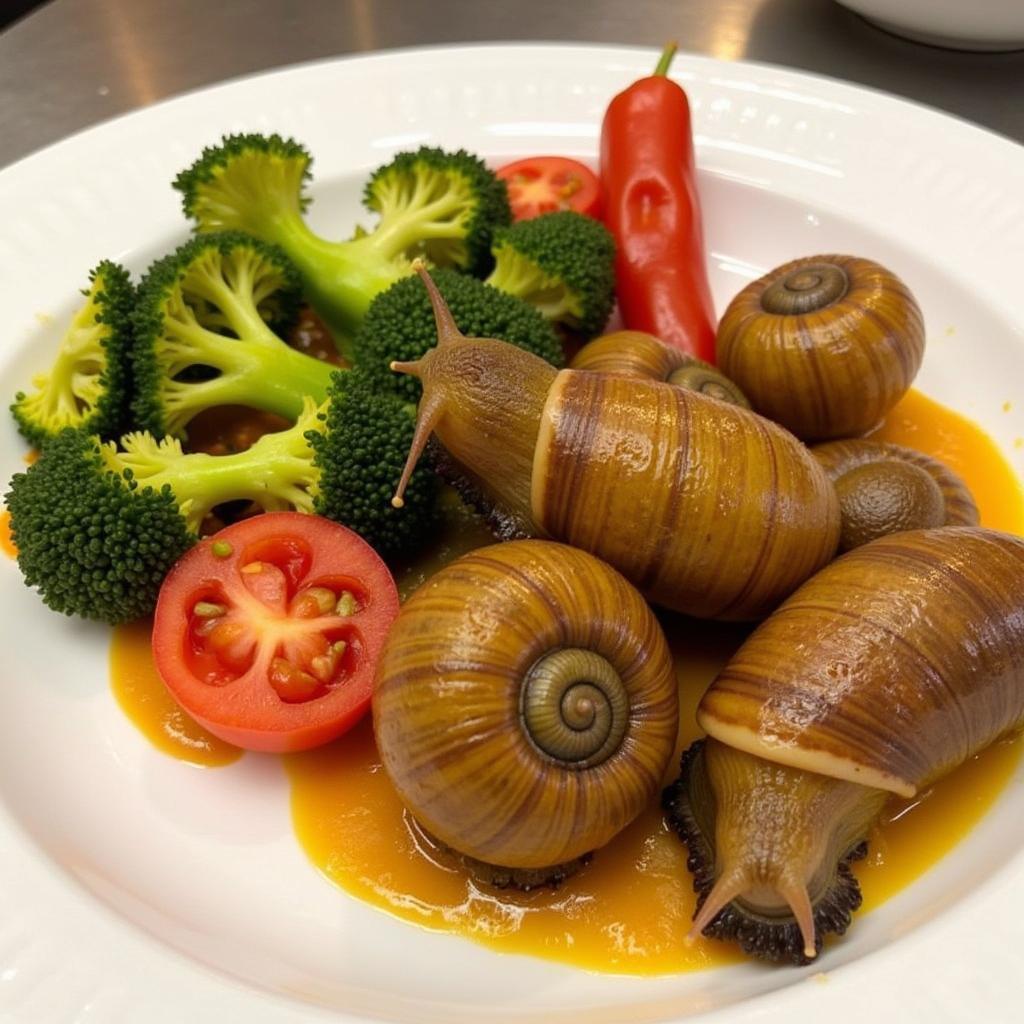The African Grey Parrot: Intelligence, Beauty, and Conservation
The African Grey Parrot, with its striking silver feathers and remarkable intelligence, has captivated the hearts of bird enthusiasts for centuries. Native to the dense forests of Central and West Africa, these parrots are renowned for their exceptional ability to mimic human speech and form strong bonds with their human companions.
 African Grey Parrot perched on a branch
African Grey Parrot perched on a branch
A Mind Beyond Mimicry: Understanding African Grey Intelligence
African grey parrots are more than just feathered mimics. Studies have shown that these intelligent creatures possess cognitive abilities comparable to those of a human toddler. They can learn hundreds of words, understand their meanings, and even use them in context to communicate their needs and desires. Dr. Irene Pepperberg, a renowned expert in parrot cognition, notes, “These aren’t just random vocalizations. African greys demonstrate an understanding of abstract concepts like color, shape, and number.”
 African Grey Parrot Playing with Toys
African Grey Parrot Playing with Toys
One famous example of their problem-solving skills is Alex, an African grey who participated in groundbreaking research for over 30 years. Alex learned to identify over 50 different objects, distinguish colors and shapes, and even understand the concept of zero. These remarkable abilities highlight the complex inner world of these parrots, urging us to reconsider our perception of animal intelligence.
The African Grey in the Wild: Diet and Habitat
In their natural habitat, African greys thrive in the lush rainforests, feeding on a varied diet of african grey parrot food. Their diet primarily consists of fruits, seeds, nuts, and leafy vegetation. They play a crucial role in seed dispersal, contributing to the health and diversity of the rainforest ecosystem.
Sadly, habitat loss due to deforestation poses a significant threat to wild African grey populations. The illegal pet trade also contributes to their declining numbers, as these intelligent birds are highly sought after as pets.
Caring for an African Grey Parrot: A Lifelong Commitment
Bringing an African grey parrot into your home is a decision that requires careful consideration. These highly social creatures require extensive attention, mental stimulation, and a commitment to their well-being.
Providing a Stimulating Environment:
African grey parrots thrive in environments that mimic their natural habitat and provide ample opportunities for mental and physical activity. Large cages with plenty of space for climbing and playing, along with a variety of toys that challenge their intelligence, are essential. Enrichment activities, such as foraging for food, learning new tricks, and interacting with their human companions, are crucial for their mental and emotional well-being.
Dietary Needs:
To ensure your African grey receives a balanced diet, offer them a variety of fresh fruits, vegetables, and high-quality parrot pellets. You can find more information on their specific dietary requirements in our comprehensive guide to [african grey parrot diet in the wild](https://omenkamag.com/african-grey-parrot-diet-in the-wild/).
The African Grey Parrot: A Conservation Imperative
The future of the African grey parrot, both in the wild and in captivity, depends on responsible conservation efforts and ethical breeding practices. Supporting organizations dedicated to protecting their natural habitat and raising awareness about the illegal pet trade is crucial.
By understanding and appreciating the intelligence, beauty, and unique needs of these remarkable creatures, we can help ensure that the African grey parrot continues to grace our world for generations to come.





